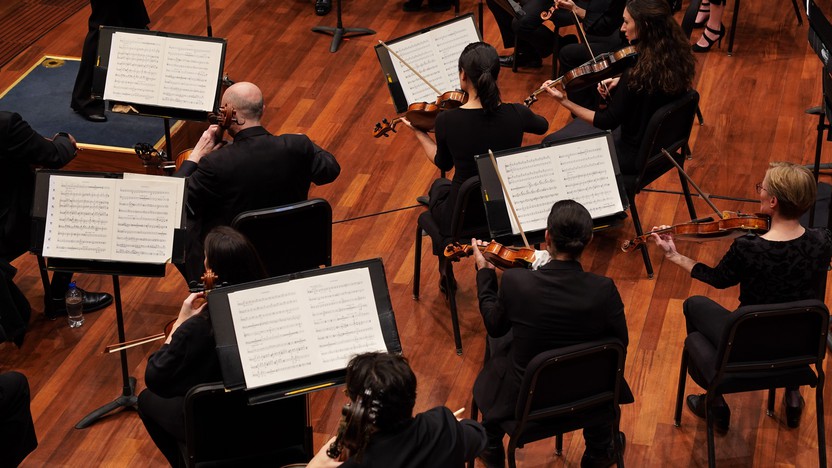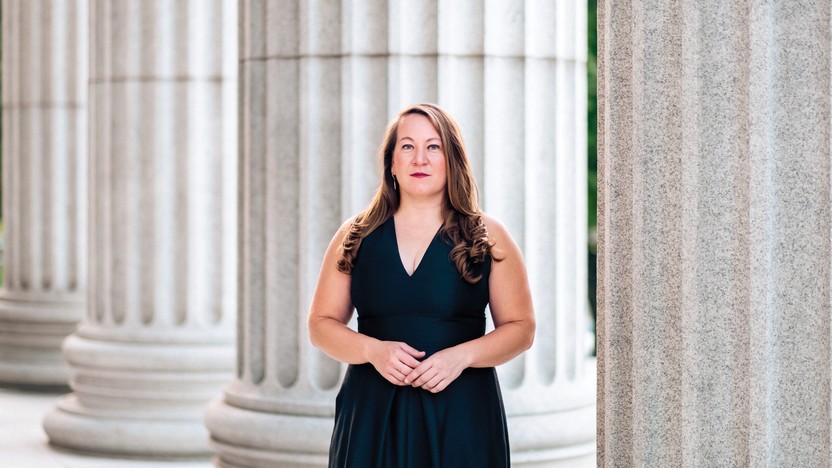Details
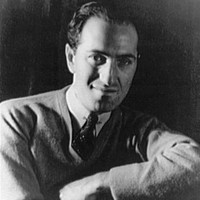
George Gershwin
Lullaby for Strings (8 min)
George Gershwin was eleven when his family first brought a piano into their apartment. Four years later, after some lessons in classical repertoire including Chopin and Debussy, Gershwin dropped out of high school and found work as a “song plugger” on Tin Pan Alley, New York’s row of music publishing firms. His breakthrough came in 1919, when the influential performer Al Jolson added the song “Swanee” to a revue.
That same year, the twenty-year-old composer converted a composition exercise into this Lullaby for string quartet, marking his earliest surviving foray into “serious” composition. Gershwin may have been a Jewish boy from Brooklyn, but he had a keen ear for the subtleties of music rooted in the African diaspora, whether from the American South or Latin America — sounds that were plentiful in the melting pot of New York City. The lilting sway of the Lullaby utilizes the type of syncopations found in ragtime or Cuban dance music.
Aaron Grad ©2024
Various arr. Jonathan Posthuma
Three American Songs (World Premiere, SPCO Commission)
“Simple Gifts” originated in Shaker communities of New England amidst the spiritual revivals of mid-1840s and has since been included in hundreds of hymnals and folk song collections. Though the details of the melody and words vary from version to version, it has become one of America’s most recognizable tunes, in large part because of Aaron Copland’s variations on the melody in Appalachian Spring. On the surface, the utopian ideals of Shaker communities: equality, community, pacifism and craftsmanship may appear to be simple in nature, but in truth they require great humility, sacrifice and hard work in service to others. The tune may sound simple, but what it claims as a “gift” is actually quite a radical and counter-cultural lifestyle — a ceaseless cultivation of a “valley of love and delight.”
“Blue Skies” is a popular song written by Irving Berlin in 1926 and has been recorded by dozens of legendary bands and singers: Benny Goodman, Bing Crosby, Ella Fitzgerald and Willie Nelson among them. The song and its text encapsulate something very American, an optimism that seeks out and celebrates blue skies amidst the grey clouds. Ironically, the minor key remains even when the singer switches to the upbeat refrain. It is almost as if the music tells us that whether for good or for bad, those blue skies or grey clouds are just around the corner. It is up to you how you choose to see them and whether you find inner joy, snap your fingers, and keep dancing anyway.
Although the Gershwin hit “Strike Up the Band!” is better known from the 1940s as a patriotic rally cry during World War II, it began its musical life satirically as an anti-war, anti-capitalist song from a 1927 musical comedy about a cheese factory tycoon convincing the U.S. government to attack Switzerland to maintain his monopoly. (It’s true! Look it up!) How do we approach a song like this in our current political climate? Is it tongue-in-cheek? Is it sincere? Will we fall in line with the pounding drums? Will we be swept away by musical earworms? Will our divisions widen in our (out of time) echo chambers amidst the growing chaos? “There is work to be done,” that’s for sure, but how will you “take your stand?”
Jonathan Posthuma ©2024
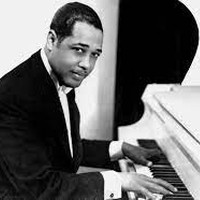
Duke Ellington arr. Stephen Prutsman
Three Songs for Chamber Orchestra (13 min) (SPCO Commission)
From his first long-term gig at a Manhattan dance club in 1923 to his death in 1974, Duke Ellington used his perch as a bandleader and pianist to create a legendary catalog of songs and larger jazz compositions. His most ambitious creations were the large, complex suites he wrote for his own touring ensemble, dating back to the groundbreaking Black, Brown and Beige Suite he introduced at his Carnegie Hall debut in 1943. As the choreographer Alvin Ailey later said of Ellington, “His band was his Stradivarius.”
After the ensemble toured the Middle East, Turkey and India in 1963 on an itinerary organized by the State Department, Ellington and his longtime writing partner Billy Strayhorn collaborated on a nine-part collection of sound impressions that the band recorded in 1966, the Far East Suite. “Blue Pepper” — subtitled “Far East of the Blues” — stands apart from the expected Ellington vibe with its groovy backbeat, but it demonstrates how nimbly Ellington and Strayhorn synthesized the tried-and-true swing band sound with modern rock-and-roll and Eastern inflections, especially in the classic recording with a solo from veteran alto saxophonist Johnny Hodges. “Bluebird of Delhi,” penned by Strayhorn alone, celebrates the mynah bird that lingered near their hotel India, singing a melodious call that inspired the chirpy clarinet theme.
This set of songs arranged by Stephen Prutsman also reaches back to an earlier Ellington hit with an international flavor, this one drawing upon sounds of the Mideast. Ellington shares songwriting credit for “Caravan” with his band’s trombonist, Juan Tizol; both appeared as sidemen on the first recording in 1936, fronted by Ellington’s longtime clarinet soloist, Barney Bigard.
Aaron Grad ©2024
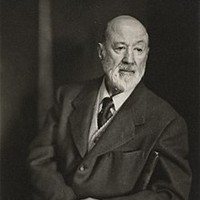
Charles Ives arr. Jonathan Posthuma
Selections from 114 Songs (World Premiere, SPCO Commission)
Charles Ives (1874–1954) is one of the most paradoxical composers in American music: an ultra-modernist writing complex, dissonant music that many thought unintelligible while also borrowing tunes from traditional hymns, folk music, patriotic marches and popular parlor songs of the day. An independent maverick who went unrecognized for decades, a hobbyist composer on the weekend who worked full-time selling life insurance. An all-around American who played varsity baseball and football at Yale and whose father was a U.S. army bandleader, yet wrote academic music inspired by New England poet-philosophers like Ralph Waldo Emerson and Henry David Thoreau and studied the music of Ludwig van Beethoven, Johannes Brahms and Antonín Dvořák. Even the composers that championed Ives’ music later in the 20th century such as Henry Cowell, Elliott Carter, Aaron Copland and Leonard Bernstein, seemed to continue the paradox: what should American music be? Music for the academics? Music for the people? Neither? Both? Ives’ music leaves that question unanswered and in doing so says immeasurably more.
“He Is There!” was completed by Ives in 1917 as part of a triptych of songs written during World War I. The song takes the form of a patriotic parade march, complete with a piccolo descant and marching percussion. The many tunes quoted throughout include “Marching Through Georgia,” “Yankee Doodle,” “Marseille,” “Tenting on the Old Camp Ground,” and a fragment of the “Star-Spangled Banner” among others in a nod to the patchwork Tin Pan Alley medleys of composers like George Cohan and Irving Berlin that Ives’ would have known well.
“Down East” takes us to a more intimate and nostalgic environment with songs transporting us back into our memories to distant places and people of deep importance. The hymn “Nearer My God to Thee” is woven throughout the music, like the threads of a quilt drawing the singer nearer to those that they hold dearly.
“Things Our Fathers Loved (and the greatest of these was Liberty)” brings our musical journey full circle. Here the hymns, the lullabies, and the village band blur together, each one a reflection of some facet of our musical souls. We may forget the words or the tunes entirely, but somehow that inner music still speaks to us.
Jonathan Posthuma ©2024
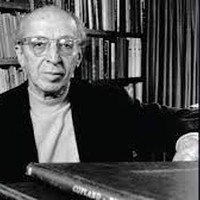 Listen to Audio
Listen to Audio
Aaron Copland
Suite from Appalachian Spring (24 min)
In the wake of two well-received ballets set in the American West — Billy the Kid (1938) and Rodeo (1942) — Aaron Copland began Appalachian Spring in 1943. He created the ballet for the dancer and choreographer Martha Graham, and he worked under the title Ballet for Martha until not long before the premiere, when Graham suggested Appalachian Spring, borrowing a phrase from Hart Crane’s poem “The Bridge.”
Created for the 500-seat auditorium at the Library of Congress in Washington, DC, this ballet needed a suitably compact pit orchestra, so Copland used just thirteen instruments in the original version. The next year he arranged most of the ballet into a concert suite for orchestra, and his publisher later added the option heard here, which preserves the original chamber ensemble scoring while adopting the structure of the concert suite.
The wonder of Appalachian Spring is how it achieves so much using such simple and familiar musical ingredients. The first section assembles its hazy wash of consonant sonorities by enunciating plain triads and the resonant intervals of fourths and fifths. The following section energizes similarly basic materials — octave leaps, triadic intervals and descending major scales — into spry dance music. There is a tender scene for the young couple, a lively romp depicting the revivalist and his dancing minions, and then a brisk solo dance for the bride, which dissipates into a return of the gentle, triadic wash of the beginning.
The famous section that follows, starting with a theme in the clarinet, presents the tune of Simple Gifts, a Shaker dance song written in 1848 by Joseph Brackett. The humble melody fits seamlessly into the homespun, diatonic language of Copland’s score, and its increasingly grand variations rise to a transcendental climax.
Aaron Grad ©2024
About This Program
Over Thanksgiving weekend, the SPCO delves into the many traditions woven into North American orchestral music — from the calm, soothing hymns and folk sound of George Gershwin to the sophisticated melodies and groovy jazz of Duke Ellington. Known for her rich voice and expressive interpretations, Twin Cities-based mezzo-soprano Clara Osowski returns to perform new arrangements of art songs by Charles Ives. The program concludes with Copland’s classic and sentimental Appalachian Spring, embodying the essence of American pastoral music.
The arrangement of Three Songs for Chamber Orchestra is made possible by support from Michael Hostetler and Erica Pascal.
Contribute
SPCO concerts are made possible by audience contributions.
Newsletter
For exclusive discounts, behind-the-scenes info, and more:
Sign up for our email club!

